What happens to a city when time freezes? If you lack such visuals in your memory, you can take a step into the world of dark tourism. Take a look inside Famagusta Ghost Town – Varosha. Once a glamorous resort area, it has been an abandoned place since 1974.
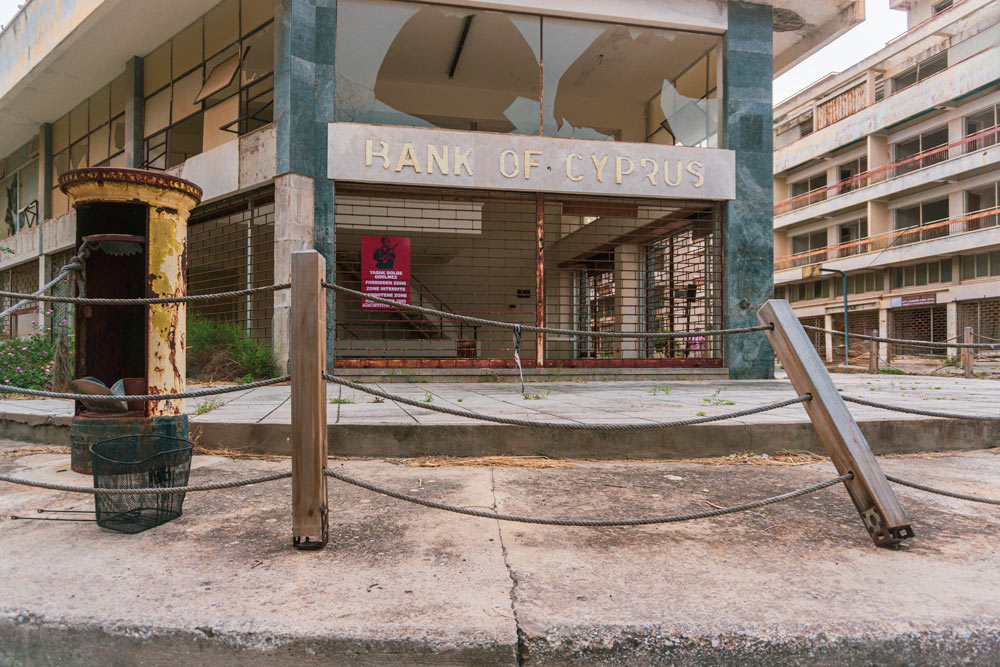
Elina, age 4 at the time of evacuation
“I can clearly hear today that knock on the door where it was our neighbours who knocked on the door and they said you have five minutes to pack, we need to leave.”
“You always have to keep account that when you go there, it is not a film set and it is not a theme park. This is where people lived.”
“And this is what makes it even harder because you’re not allowed to go inside. Nobody’s allowed.“
— Elina, interviewed on The Radio Vagabond podcast
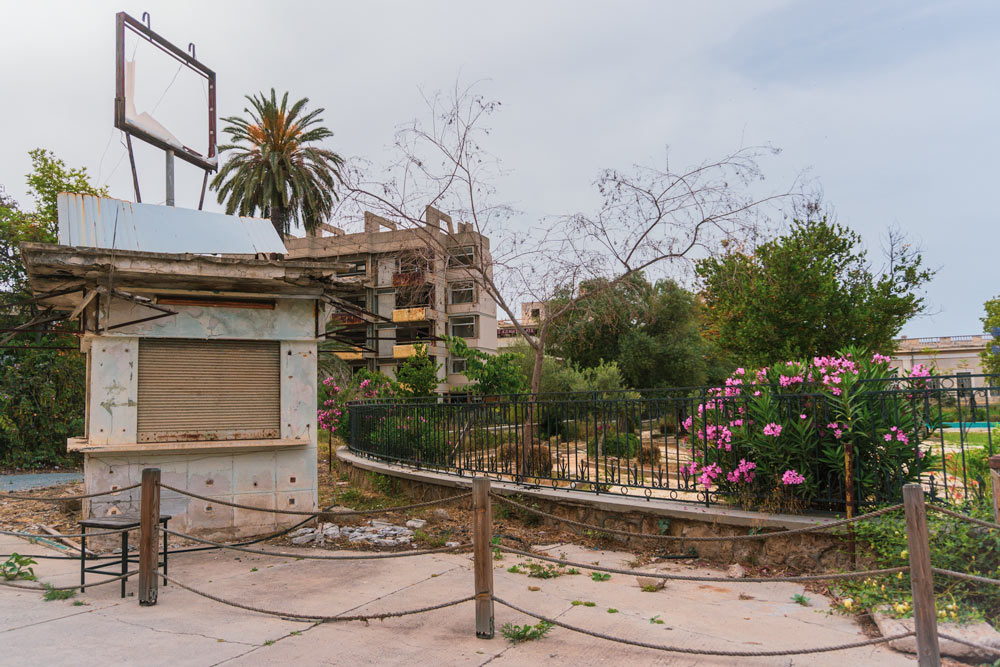
Brief History of Varosha
The name Varosha is derived from the Turkish word “varos,” which means “suburb.” It refers to the southern quarter of Famagusta, which is now part of the occupied territory of Cyprus. In the early 70s, the area was a popular destination for celebrities and tourists alike. You could spot people like Elizabeth Taylor and Brigitte Bardot strolling the streets and beaches.
But it all ended in 1974 when Turkey started its invasion. The residents fled and never returned, and the buildings were left untouched. Many of them moved to Paralimni, Dherynia, and Larnaca. Nowadays, the area is still under Turkish control, but a small part, including some streets, is now open to the public. On the other hand, Paralimni became the modern-day capital of the Famagusta province of The Greek Cypriot part.
The buildings were left and are undergoing constant decay, but there is also evidence that the houses underwent extensive looting. There are missing power sockets, switches, or ceiling lamps.
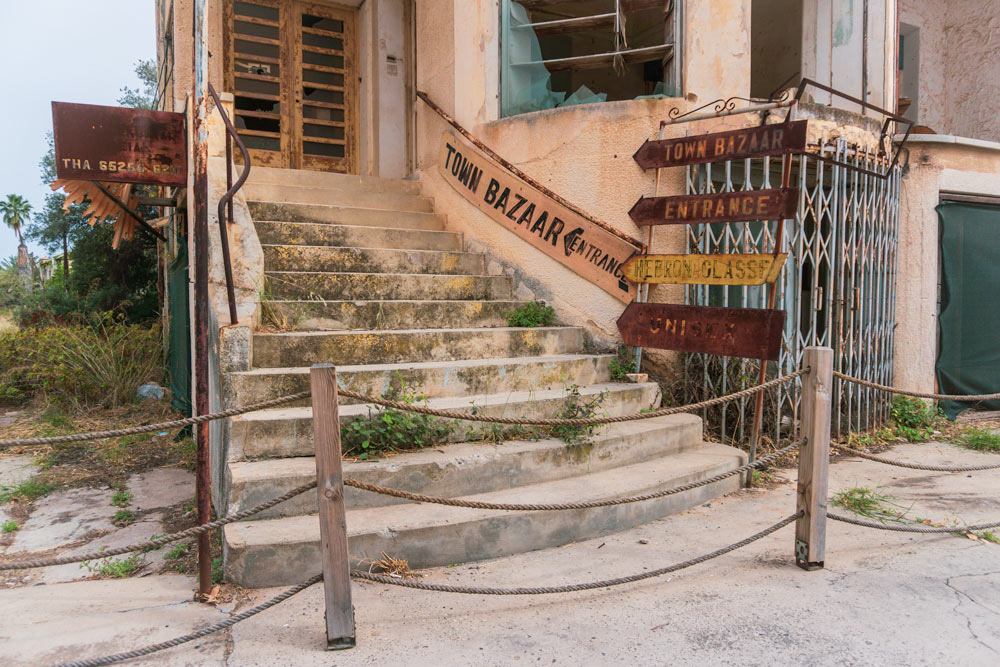
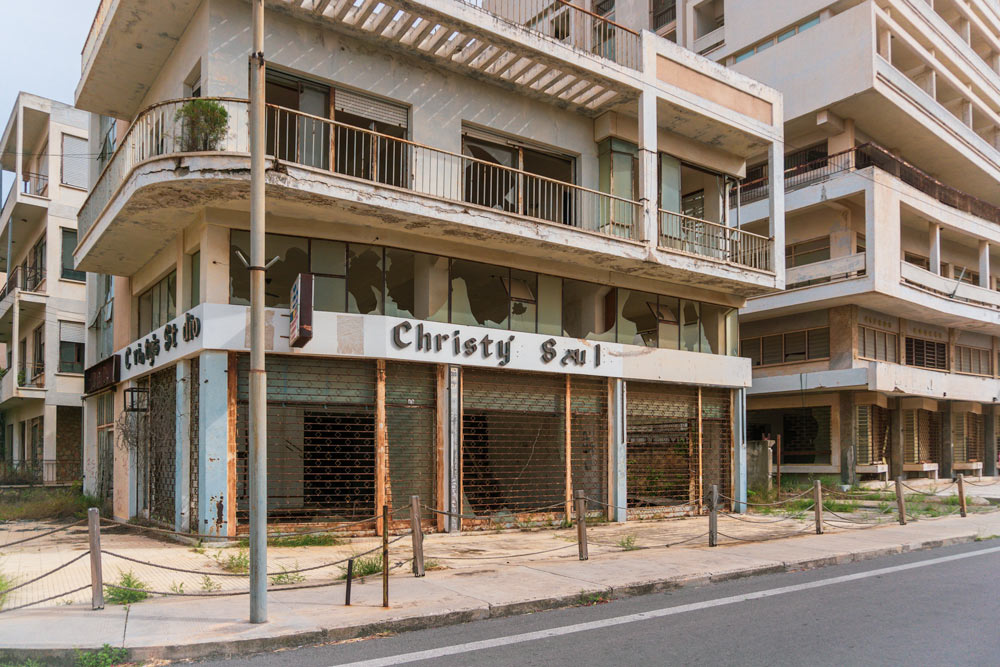
Vasia Markides, daughter of a former resident
“Anyone who comes from Varosha has a romanticized notion of it. They talk about it being the hub of art and intellectual activity. They describe it as the French Riviera of Cyprus.”
— Business Insider, 2020

What to See Inside Famagusta Ghost Town
The most notable streets include John F. Kennedy Avenue, where many well-known high-rise hotels are located, such as the King George, The Grecian, The Florida Hotel, The Asterias, and the Argo Hotel (where Brigitte Bardot stayed).
Another popular street was Leonidas, with all the shops, bars, restaurants, nightclubs, and the Toyota car dealership — a landmark that frequently appears in images of the abandoned town. If you are curious about how they looked before, check this Reddit post, where you can see some old photographs alongside the present ones.
Besides crumbling hotels, the vegetation is slowly taking its place. There are many overgrown streets, rusting cars, and abandoned shops. If you look more closely into some corners, you will find faded advertisements, broken window displays, old churches, and even mosques.
There are a couple of beaches with hotels open to the public, but a fence separates them. The Turkish and TRNC military is present from the very first parts when you head from the old walled Famagusta towards Palm Beach.

Ceren Bogac – Turkish Cypriot Resident
“It was just like living next-door to ghosts. The houses had flower pots, curtains, but no one was living there – it was a space which had been left suddenly.”
“One day I found, in a box, the personal belongings of other people, like photo albums and journals. I asked my grandmother: ‘Who does this belong to?’ She said: ‘It belongs to the real owners of this house.’” And that was the first time I realised that we don’t own the house that we are living in.
— Famagusta Cyprus
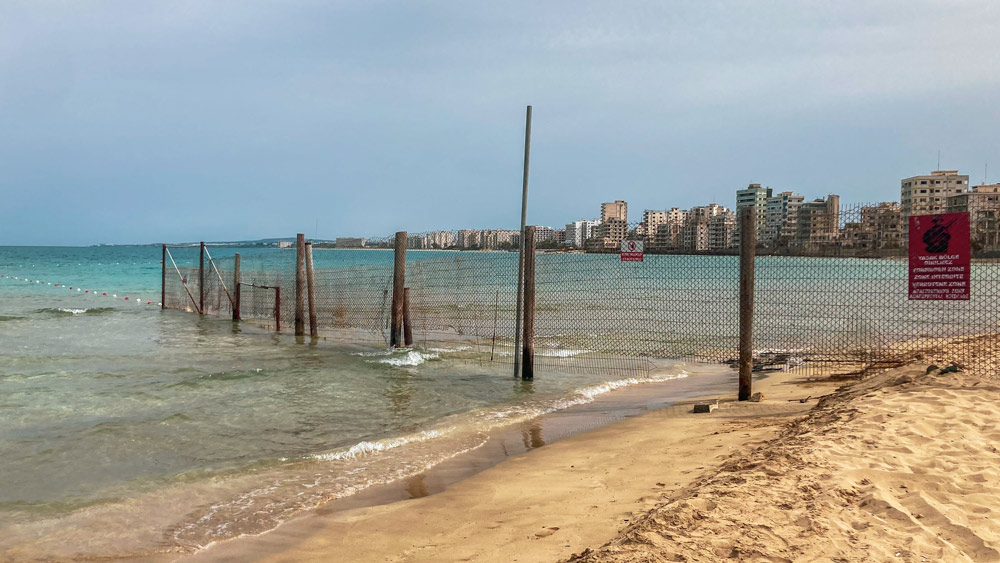
Rules and Restrictions
You don’t need any ID card or passport to enter the zone. The entrance is free of charge. However, you will need a passport when traveling from the southern, non-occupied part of the island and passing through a checkpoint. Some areas are off-limits, and it is not allowed to touch or enter the buildings. You can only walk in the designated areas.
There are many signs from outside that warn people that it is not allowed to enter it (you can only enter via the official entrance inside Famagusta ghost town, although there is some traffic inside allowed). The restrictions also apply to photographing and shooting, especially soldiers and military buildings.
Besides walking, you can rent a bicycle, e-scooter, or buggy for a charge, but be prepared to have cash. It should cost around 150 TL (May 2025).
There are even some cafes, public toilets, and a mosque open to the public at the end of the designated road for the public.
The place is open daily from 8:00 AM to 8:00 PM in summer and 5:00 PM in winter. You can often book a tour that also includes a visit to the nearby Salamis Ruins.
If you are coming alone and wonder how much time it will take you. Well, it depends on how deep you want to explore the details in each corner. If you decide to walk everywhere, count for 2 to 3 hours.
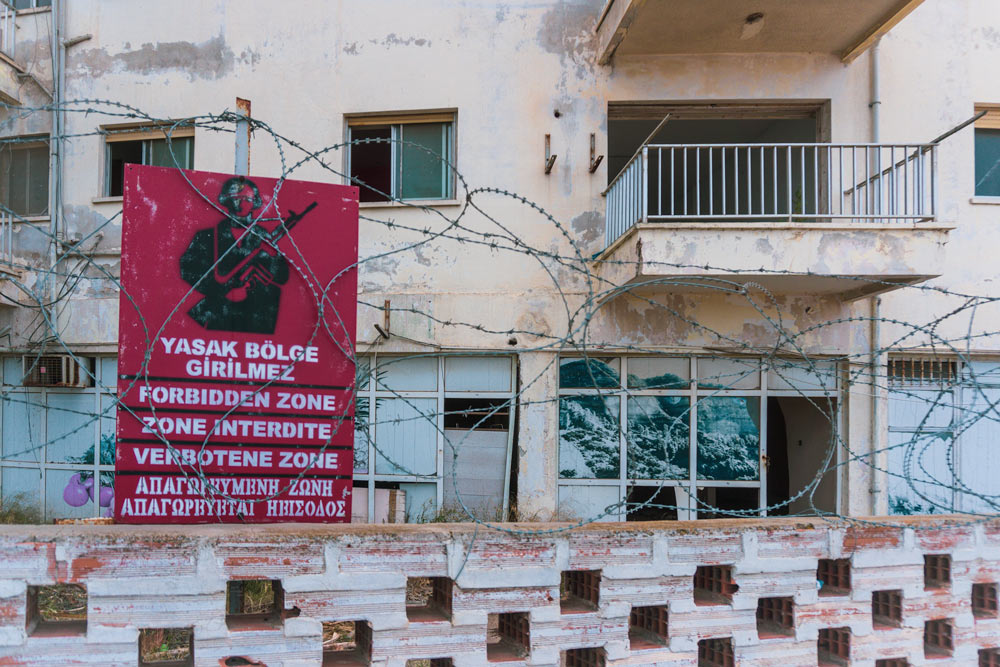
How to Visit – Checkpoints
If you are visiting the place alone and traveling from southern cities and areas via checkpoints in Nicosia or Deryneia, you will need a passport. If you are in Nicosia, after the checkpoint you can head towards the Kyrenia gate and take a minibus to Famagusta. There are no timetables, and be prepared to pay in cash.
Deryneia’s checkpoint is more complicated. If you are renting a car, you will need to buy another car insurance. If you are coming by public transport, there are a couple of buses (check them here) that stop at the Deryneia Green Line (the last bus stop).

You will need to cross the checkpoint on foot in the same line as cars. After that, the officials can hire a taxi for you (20 EUR, which seems to be overpriced when considering a Google review from a guy who ordered a cab from the Famagusta center to Salamis Ruins and back for only 30 EUR), or you can walk or hitchhike (which is relatively easy to do there).
Some buses supposedly run on weekends, but when I arrived on time according to the timetable, a man at the checkpoint told me the bus had left about thirty minutes earlier. So, it’s better not to count on any public transport.
And don’t trust Google Maps if it suggests a shortcut—there’s no pedestrian access from Deryneia directly into the Famagusta Ghost Town. That route is for vehicles only. To visit Varosha, you must enter through the designated access point and approach the area from the Famagusta City Walls.
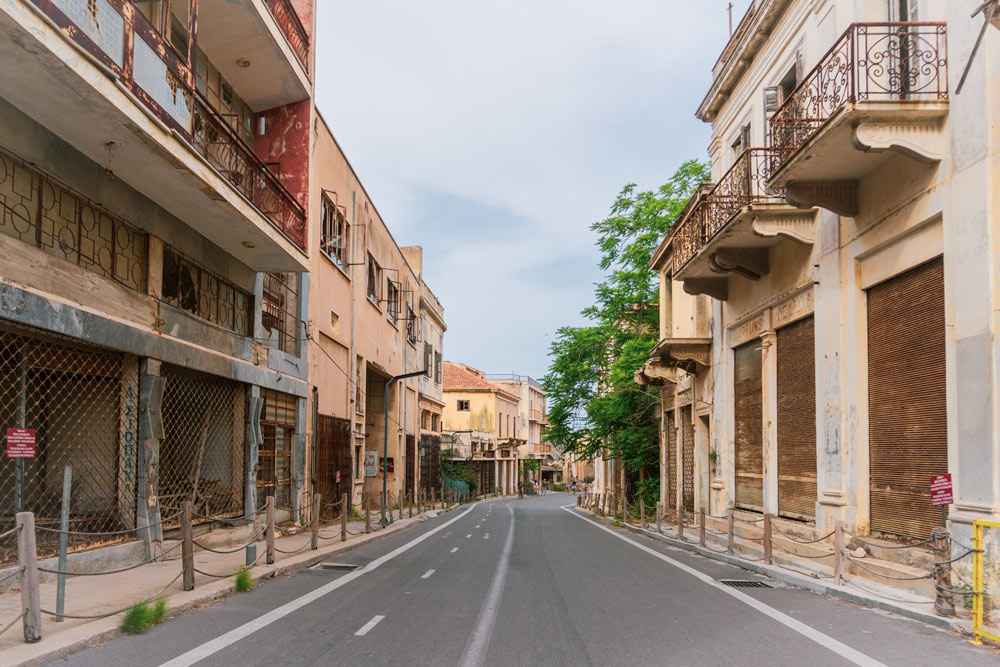
If you’re intrigued by Cyprus’s hidden past, don’t miss my journey to Foinikas – the forgotten Templar Knights village tucked away in the island’s interior.
Sources:
https://www.reddit.com/r/europe/comments/jeo9ox/pictures_of_the_cypriot_ghost_city_of_famagusta/
https://osea.com.cy/en/bus-routes/
https://www.theradiovagabond.com/323-cyprus/?utm_source=chatgpt.com
https://www.businessinsider.com/ghost-town-varosha-cyprus-photos-2020-9?utm_source=chatgpt.com#the-rich-and-famous-claimed-verosha-as-the-most-beautiful-spot-on-the-island-2
https://www.famagustacyprus.eu/varosha-the-abandoned-tourist-resort/?utm_source=chatgpt.com
Sources: